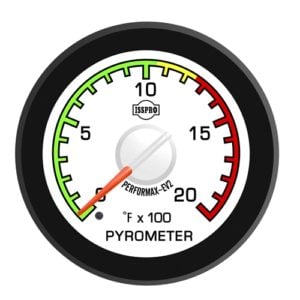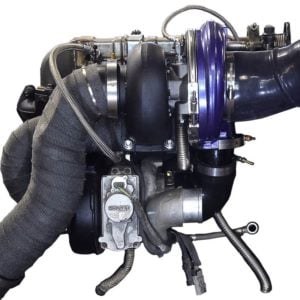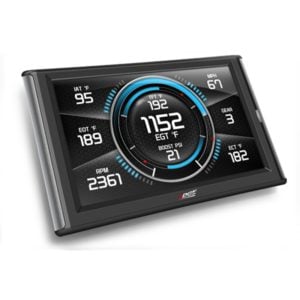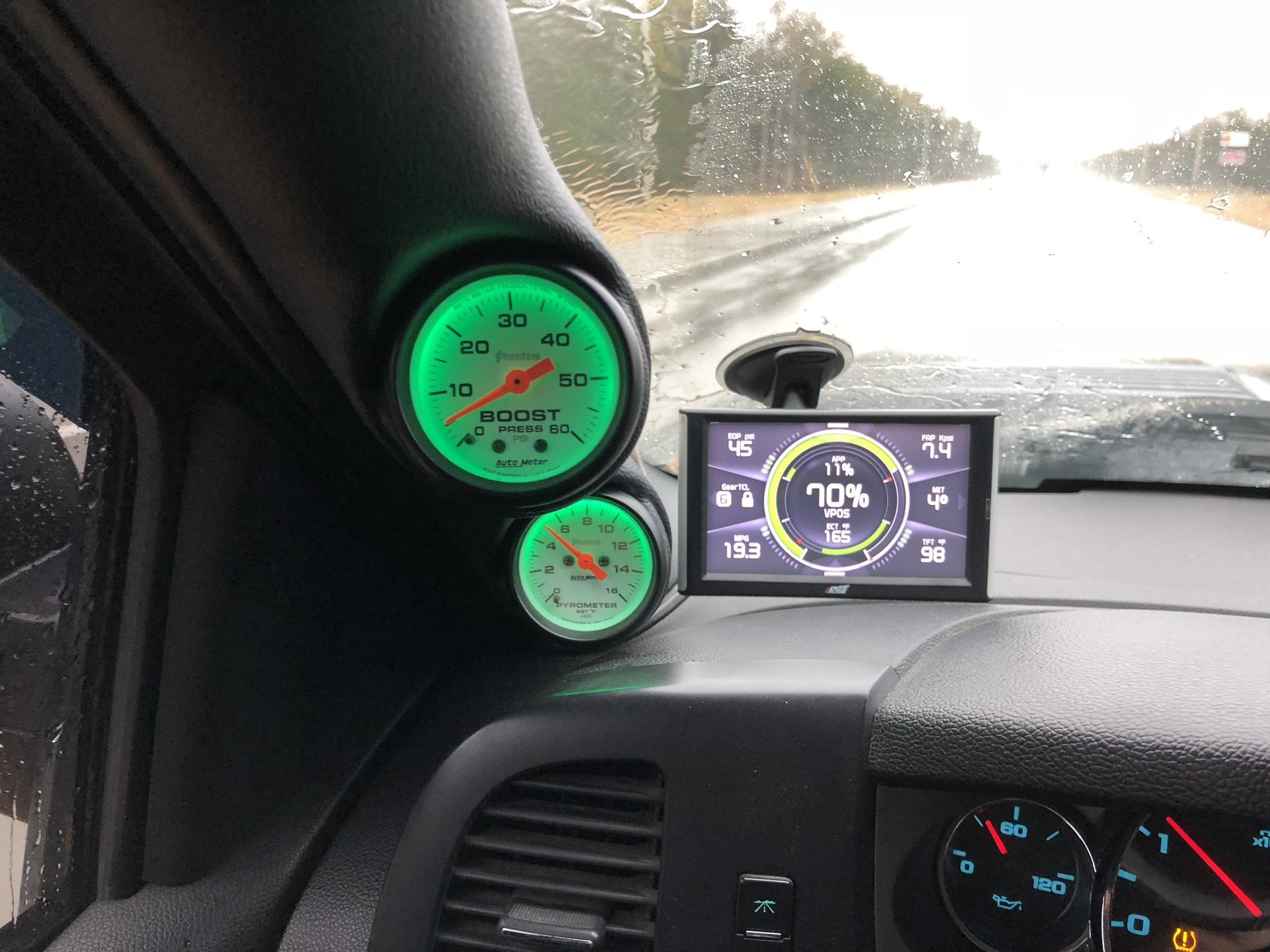Written By: L.T. Tolman

It’s kind of a diesel cliché to have a cockpit filled with gauges. In fact, it’s almost a badge of honor for some, in the same way guys leave their lift pump filters hanging below the frame rails of their pickup, letting the world know “this is no stock truck”. But there is some method to the madness when it comes to outfitting your dashboard with more instrumentation. There’s a lot going on inside a diesel engine, and lots you should pay attention to. Today well talk about why it’s a good idea to add gauges, which parameters you should monitor, and some good ways to mount them.
So… why do I need more gauges?
When you add more power to your engine (which let’s face it, we all are going to do) you are operating your engine outside of its design parameters. Modern programmers and tuning can easily add an additional 150 or more horsepower over stock, but to do so, you’ll be creating more heat, be working the turbo charging system harder, and demanding more fuel volume to create more power. While generally the stock engine and drive train components can live a long life with increased power, you want to make sure everything is operating in a safe zone, and be able to quickly get your foot off the skinny pedal if something goes wrong, rather than waiting for a potentially catastrophic failure to let you know the truck was not happy. It’s all about spotting a problem before it becomes a massive headache. In other words, gauges are cheap insurance.
What should I monitor?
- EGT: This is the first gauge I always recommend. Known as a pyrometer, it measures the temperature of the exhaust, and is the first clue if your engine is happy or not. One of the easiest ways to add power is to add fuel. The problem, all that extra fuel creates more heat. A stock engine might max out in the range of 1,200°F under sustained load (like towing a trailer) which is a perfectly safe temperature. On the other hand, a truck running a hot tune with a stock turbo setup might get as hot as 1,800°F to 2,000°F. That might be OK for a few seconds on that occasional trip to “Mexico” but temps of that level are certainly not safe for sustained use. With an EGT gauge installed, you can quickly back off the fuel if things get too toasty.

Got boost? Especially if you’ve upgraded the turbocharger, its a great idea to keep an eye on boost levels. - BOOST: There’s nothing more fun than mashing that accelerator, hearing the turbos spool, feeling your body pressed back into the seat, and watching a boost gauge quickly max out. But a boost gauge is also helpful in diagnosing a problem, like a leak in the charge air system, or a drop in power. Most stock trucks run at about 35 psi max, with tuned trucks being slightly higher, so a 60psi gauge is a great place to start. But if you have compound turbos, you may want to step up to a 0-100psi version for total system pressure, and keep the 0-60 psi gauge for intermediate stage pressure.
- FUEL PRESSURE: A fuel pressure gauge will let you know if your fuel delivery system is up to the task of supporting the horsepower you’re asking for. Keeping an eye on the low pressure side will let you know if your lift pump has adequate volume, or if it needs an upgrade. If during wide open throttle acceleration or high load conditions you notice the lift pump pressure drops, this means the injection pump is using more fuel than its being supplied, and you are possibly losing power. And the same goes for the fuel rail. If pressure drops when it shouldn’t, you know you have a problem that needs addressing, like a weak or too small injection pump or fuel delivery issue, and the gauge will help you spot the problem.
You can get many styles of gauges, some with warning lights built in that will flash to get your attention if certain thresholds are exceeded and even others that are a perfect match to the gauges on your instrument cluster for an OE look And if you are of the “more is better” mindset, you can get dozens of gauges, each reading something different, making other diesel truck owners green with envy.
Digital OBD Monitors
So far, we’ve covered traditional analog gauges that display one thing at a time, but on modern diesels there are hundreds of parameters already being recorded on the on-board data bus. The Edge Insight CTS2 or Banks iDash can tap into that data stream and show many more in depth parameters and even display several at the same time.

Mounting Solutions
When it comes to mounting your gauges, there are many options. The most popular is a certainly the triple pillar pod because it is easy to install, and places the gauges right in the drivers line of sight on the A pillar on the left of the windshield. You can easily keep an eye on your engines vitals without taking your eyes off the road. If three gauges aren’t enough, you can get also get pods that fit on the steering column, top of the dash board, above the rearview mirror, and even universal mounts that can go anywhere.
Installation
Analog style gauges are offered in mechanical and electronic versions; and this has to do with how the information is read from the engine and transmitted to the gauge itself. In the case of a boost and EGT gauge, small holes are first drilled into the intake and exhaust manifolds and tapped with 1/8 NPT threads where the sensor or sending unit is installed. A mechanical pressure gauge just has a plastic or copper tube which attached to the engine and goes up into the cab and connects to the back of the gauge. An electronic version has one more step. A sending unit is threaded directly into the tapped hole, and then a wiring harness plugs in and connects the sending unit to the gauge.
Generally, digital monitors are much simpler to install as they simply plug in to the OBDII port underneath the dash, and many popular types require no other wiring connections at all. In fact, you’ll probably spend more time setting up the display to show your preferred parameters than you would installing the display itself. With analog gauges on the other hand, you may spend the better part of a day running wires and lines under the dash and into the engine bay, not to mention the time needed to drill and tap holes in the engine without shavings getting inside.
CONCLUSION
What gauges you decide to run comes down to personal preference, and how much time and skill you want to devote to installation. In my LMM, I run a 0-60 psi boost gauge and a 0-1,600° pyrometer. I consider these two most important, and for me, an analog style gauge is ideal because it’s easy to read at a quick glance. In addition, I also run an Edge Insight CTS2 setup to display gear position, MPG, throttle position, turbo vane position, engine temp, fuel rail pressure, injection timing, and trans temp. At the end of the day, adding gauges won’t add power or make your truck run better, but they are very helpful when diagnosing a problem, and most importantly, will protect your investment, and let you keep that engine happy with the tune set to kill, and keep that truck on the road for many miles to come.


Thanks
I have a 1993 f350 7.3 idi turbo. I was planning on running a 0-15 psi boost gauge (stock is 8psi and i really dont plan on running it higher than 11)
Also, a pyro of course.
Oil pressure
And maybe a fuel pressure…